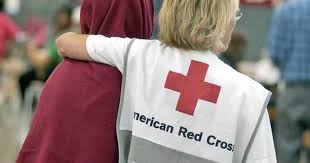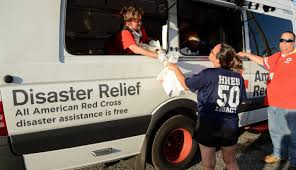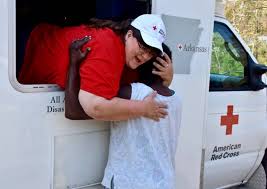
(UNDATED) – The Indiana Region of the American Red Cross has volunteers trained and prepared to respond to what forecasters are predicting will be an active hurricane season (June 1-November 30) during the COVID-19 pandemic. Forecasters predict that out of the 16 named storms in the Atlantic Ocean for 2020, eight will become hurricanes with as many as four reaching major hurricane strength. A combination of warm sea temperatures and other factors could lead to the development of more named storms than usual.

“Unfortunately, the hurricane season won’t wait for this pandemic to be over,” said Chad Priest, Regional CEO of the American Red Cross, Indiana Region, “so we’ve reviewed and adapted our natural disaster preparedness and response capabilities in the context of this public health crisis.”
The Indiana Region of the American Red Cross is frequently active in hurricane response every year. In 2018, more than 100 Indiana volunteers deployed at a moment’s notice to help individuals and families affected by hurricanes Michael and Florence. Hoosiers also stepped up financially, donating more than $1.4 million to Red Cross disaster relief.

The Red Cross has altered many deployment and response protocols due to COVID-19, with an emphasis on virtual support. The Indiana Region of the American Red Cross often deploys teams of trained volunteers and sets up a disaster headquarters onsite if a large hurricane response is needed. During the pandemic, it is likely that only one or two disaster team leaders will deploy, coordinating with their volunteers and staff virtually to ensure those impacted by disasters receive needed services. The services provided to those impacted by disasters will not change, but the tactics for delivery will—adjusting to social distancing guidelines and limiting person-to-person interactions.

The Red Cross will open disaster shelters at the request of emergency management and in coordination with local public health authorities. Non-congregate sheltering options (such as housing those impacted by disasters in hotel rooms) will be the preferred method. If there are many people requiring shelter, the Red Cross will explore multiple options with multiple partners, including government, commercial lodging operators, universities and colleges, faith-based organizations and others. Whatever the location, additional safety precautions will be taken at all shelter sites, including:
- A health screening process for everyone coming into the shelter;
- An isolation care area in the shelter;
- Masks, tissues and plastic bags throughout the shelter;
- Social distancing practices, as much as possible, such as staggering meal times and extra space between cots, chairs, and tables;
- Multiple handwashing stations, in addition to normal restroom facilities;
- Increased wellness checks to identify potential illness, including self-monitoring and checking temperatures of both shelter residents and staff; and
- Enhanced cleaning and disinfecting practices throughout the shelter
Whatever hurricane season brings this year, Indiana will likely activate again—even during a pandemic.



